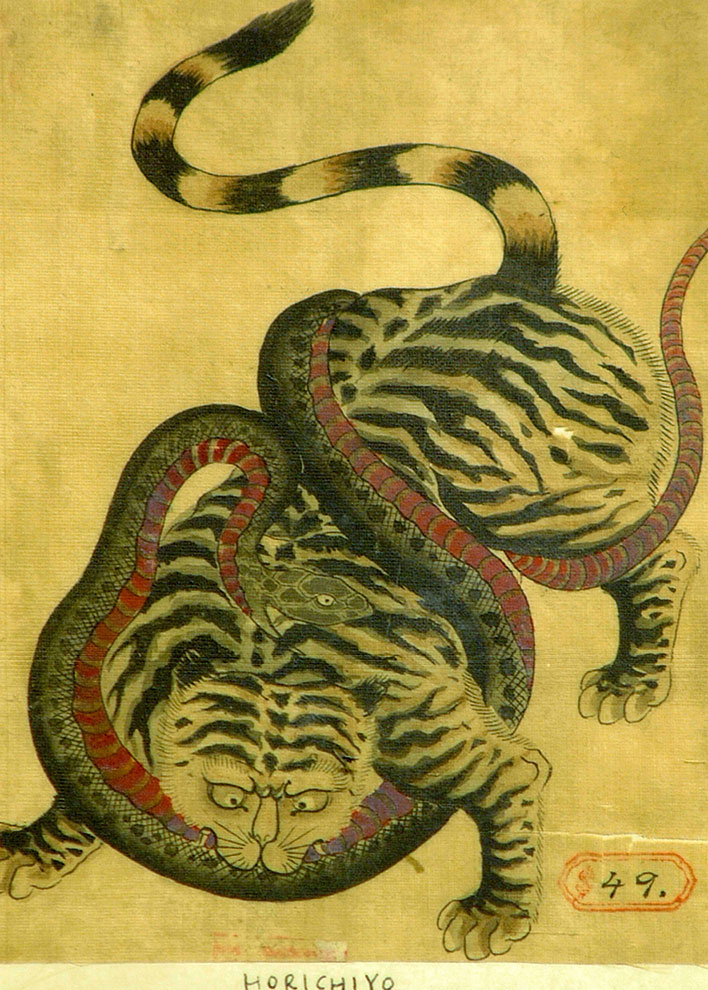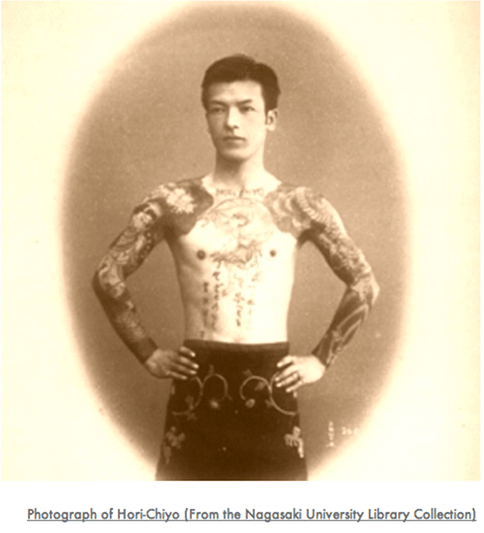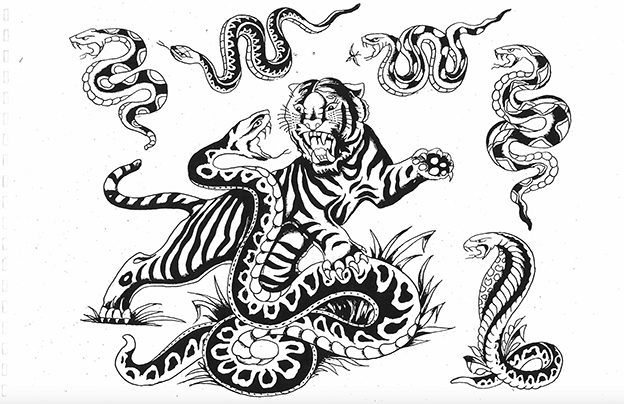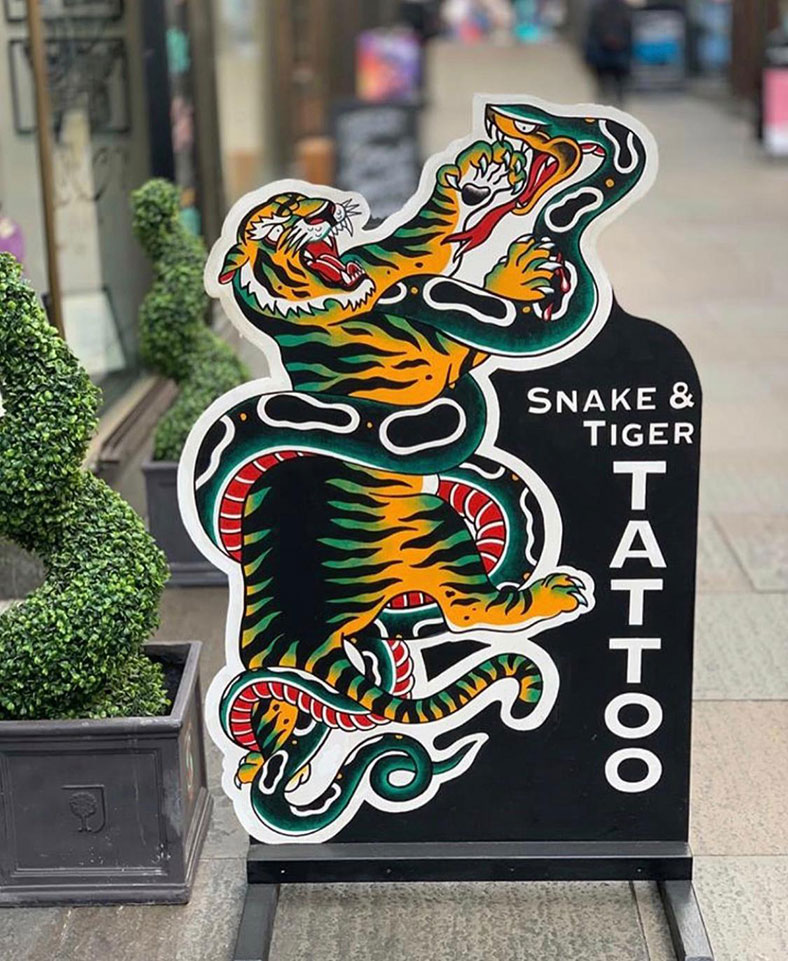Snake and Tiger is an independent tattoo studio in Leeds, (located in Thornton’s Arcade at the top of Briggate).
Founded by Chris Lambert and Gareth Miller in 2015. Both tattooists have nearly 40 years of experience combined and together they decided to create an inclusive studio designed to cater to everyone’s needs.
While both Chris and Gareth have unrivalled experience, both have come to understand that your memories from your experience with us last as long as the tattoo. That’s why from the moment you walk through our door we do our best to ensure you feel comfortable and reassured by our experienced staff providing a bespoke service to suit your needs.
To date, Snake and Tiger has successfully tattooed thousands of satisfied customers including Game of Thrones actress Lena Headey and British Olympic gold medalist Nichola Adams. Premier League footballers along with Coronation street and Emmerdale stars. We have a wide portfolio of varying styles from the smallest delicate tattoos to full body suits.
Snake and Tiger is open Tuesday to Saturday, 10:00 – 18:00.
Site photography supplied by Studio Lester
In the Akita Prefecture Museum in Japan, the faded and yellowing design sheets of a famous old Japanese tattoo artist are stored. One of the sheets of designs which survives is of an enormous tiger locked in a mortal struggle with a coiled, rasping snake. The tiger’s jaws encase the serpent, whose scaled length envelops the beast’s body. The snake hisses, its fangs bared. 
It is the work of Hori Chiyo, a late 19th century tattooer who made his fame around the world in the Victorian era as the man who claimed to have tattooed Prince George, the future king of England, during the prince’s visit to Yokohama in 1881. As the Japanese government had cracked down on tattooing, tattoo artists like Chiyo were forbidden from tattooing Japanese citizens, but found a loophole allowing them to tattoo Western travellers to the country, all of whom were enamoured by the opulent exoticism and exciting new aesthetics of the Orient.
 The design of the snake in deadly combat with a tiger, which would likely have been tattooed at large scale on a customer’s back, dates from the meetings of Western and Japanese tattooing in this moment of cultural encounter in the latter half of the 19th century, and sits in a long tradition of tattooing of this same motif in both Japanese and Western styles.
The design of the snake in deadly combat with a tiger, which would likely have been tattooed at large scale on a customer’s back, dates from the meetings of Western and Japanese tattooing in this moment of cultural encounter in the latter half of the 19th century, and sits in a long tradition of tattooing of this same motif in both Japanese and Western styles.
As Western and Japanese tattooing intersected and developed into hybrid forms over the 20th century, as tattoo artists from both nations shared ideas and designs, this clash of bold, fearless and fearsome creatures has become an iconic image in Eastern and Western tattoo traditions, endlessly repeated and reworked by every major tattooist at every scale, from small pieces on delicate biceps to sprawling, multi-coloured backpieces, transmitted as a flash design and traded throughout the world. It has been rendered in flourished, ornate Oriental patterns and in stripped-down, three colour American style; with fine lines and with heavy shading. It is an essential image in any tattooer’s arsenal, if they are connected to the lineages of the deep and layered traditions of their art. And of course: it has stood the test of time, because it has continued to appeal to customers for many generations.
This is hardly surprising. As a design, its symbolisms are practically infinite – two wildly different beasts, each ascribed with complex mythological histories and ancient symbolisms, locked in battle. In Eastern art, the commonness of the design perhaps has its roots in the Chinese zodiac, where the two animals are often said to be adversaries and opposites; embodiments of fundamentally opposing forces of nature. In a more pragmatic Western reading, the image can be read as a relentless struggle between cunning and brute strength; between poison and claws; between ruthlessness and brutality; between cunning and guile. It is, by any reading, simply a brilliantly adaptable piece of iconography, lending itself to endless compositions, as the brute mass of the powerful tiger wrestles with the twisting forms of the snake.
 As a name for this tattoo shop, then, it serves several purposes. It illustrates our commitment to the connections and intersections between both Western and Japanese tattoo traditions. It pays homage to a design that has travelled and changed through tattooers sharing it and reworking it across continents over the last 150 years, and to the men and women who have worn this image in one form or another on their skin. It speaks to a design that has been chosen countless times by customers from flash sheets and books, and in custom versions just for them. And it states our desire to continue the evolution of this ancient image, drawing upon its history but producing it with modern technologies and the highest contemporary standards.
As a name for this tattoo shop, then, it serves several purposes. It illustrates our commitment to the connections and intersections between both Western and Japanese tattoo traditions. It pays homage to a design that has travelled and changed through tattooers sharing it and reworking it across continents over the last 150 years, and to the men and women who have worn this image in one form or another on their skin. It speaks to a design that has been chosen countless times by customers from flash sheets and books, and in custom versions just for them. And it states our desire to continue the evolution of this ancient image, drawing upon its history but producing it with modern technologies and the highest contemporary standards.
In short, it exemplifies our philosophy: that every new tattoo we make, whether custom or taken from historic flash, is connected to the history of our art form, and its deep roots. Every new tattoo we make is made with an intense respect for the past, and with a desire to create the best work in the present.